©Pablo Picasso - Landscape at Ceret 1911
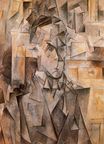 |
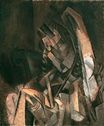 |
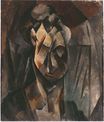 |
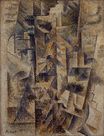 |
 |
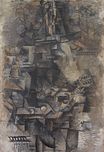 |
 |

Landscape at Ceret 1911
65x50cm oil/canvas
The Solomon R. Guggenheim Foundation
The image is only being used for informational and educational purposes
<< Previous G a l l e r y Next >>
From The Solomon R. Guggenheim Foundation:
Cubism, which developed in the crucial years from 1907 to 1914, is widely regarded as the most innovative and influential artistic style of the 20th century. A decisive moment in its development occurred during the summer of 1911, when Georges Braque and Pablo Picasso painted side by side in Céret, in the French Pyrenees, each artist producing paintings that are difficult—sometimes virtually impossible—to distinguish from those of the other.
Picasso’s still life Carafe, Jug, and Fruit Bowl, painted two summers before, shows an earlier stage of this style. Surfaces are broken into sharply defined planes but are not yet complexly fragmented; forms still retain an illusion of volume; and perspective, though dramatically shortened, is not obliterated. At its climax, Braque and Picasso brought Analytic Cubism almost to the point of complete abstraction. Among such works is Picasso’s Accordionist, a baffling composition that one of its former owners mistook for a landscape because of the inscription “Céret” on the reverse. With diligence, one can distinguish the general outlines of the seated accordionist, denoted by a series of shifting vertically aligned triangular planes, semicircular shapes, and right angles; the centrally located folds of the accordion and its keys; and, in the lower portion of the canvas, the volutes of an armchair. But Picasso’s elusive references to recognizable forms and objects cannot always be precisely identified and, as the Museum of Modern Art’s founding director Alfred H. Barr, Jr. observed, “the mysterious tension between painted image and ‘reality’ remains.”
In Landscape at Céret, another canvas painted that summer, patches of muted earthy color, schematized stairways, and arched window configurations exist as visual clues that must be pieced together. For this painting, as with all Cubist works, the total image must be “thought” as much as “seen.”
Jan Avgikos